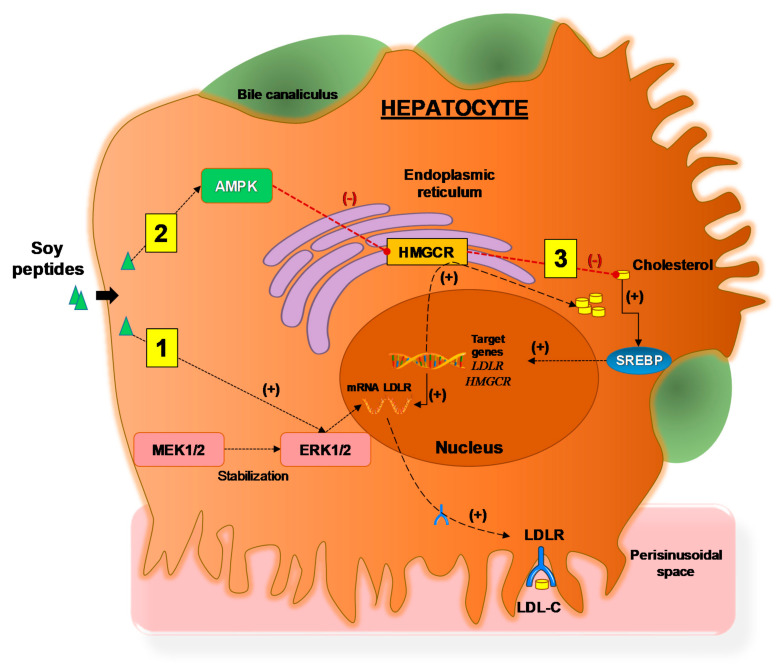Figure 5.
The mechanism of action of soy peptides in HepG2 cells, adapted from Lammi et al., 2015 [63]. Three distinct pathways lead to increased LDLR activity, which can bind and transport extracellular LDL into liver cells with final hypocholesterolemic effects. (1) Soy peptides, which enter the pathway that stabilizes mRNA levels contributing to the increased levels of LDLR protein in the plasma membrane and increased LDL-C uptake. (2) Soy peptides activate AMPK which, by phosphorylation inactivates the target substrate HMGCR, the key enzyme involved in cholesterol synthesis. This step is associated with decreased intracellular level of cholesterol. (3) Decreased intracellular cholesterol levels activate the transcription factor SREBP-2 which, in turn, activates the transcription of genes LDLR and HMGCR resulting in increased levels of proteins LDLR and HMGCR, respectively. Abbreviations: AMPK, adenosine monophospate-activated protein kinase; ERK1/2, extracellular signal-regulated protein kinases 1 and 2; HMGCR, 3-hydroxy-3-methylglutaryl coenzyme A reductase; LDL-C, low-density lipoprotein-cholesterol; LDLR, low-density lipoprotein receptor; MEK1/2, mitogen-activated protein kinases 1 and 2; SREBP, Sterol regulatory element-binding protein. (+), increased effect; (−), decreased effect.

